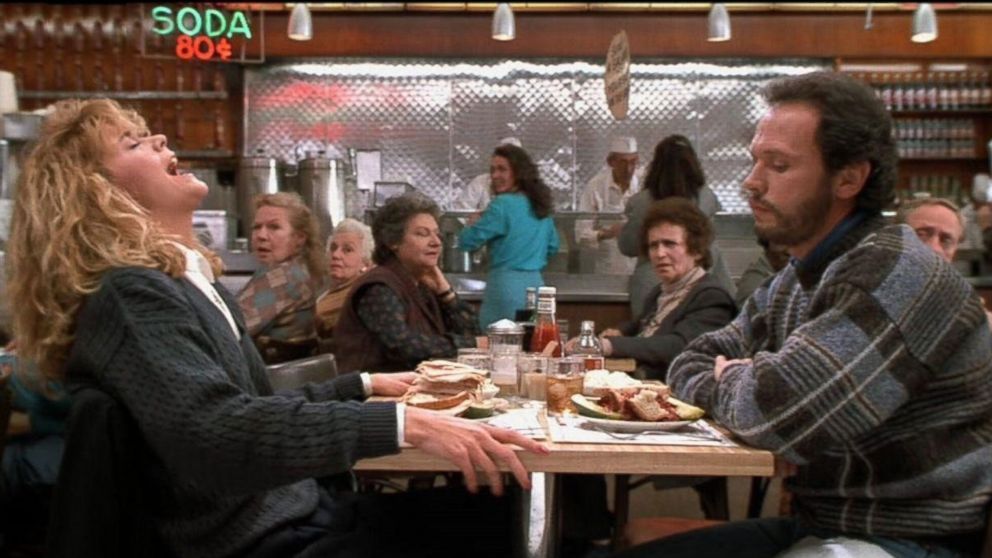Open Heart, Awake Mind: A Practice + Reflection Group
Dina Varano • April 3, 2017
Sundays, April 3 – 17, May 1 – 15, 2017
1:00 - 3:00 pm
JCC Indy: To register, click on http://jccindy.org/adult-education/arts-education/
You may have meditated for years and dabbled in the teachings of traditional and contemporary masters but the promised goal – spiritual awakening – still eludes you. Well, you’re in good company! In this course, shared practice and reflection provide inspiration for the spiritual journey. From waking up to the reality of our everyday lives to awakening to Ultimate Reality, we’ll explore how meditation offers you powerful tools for deeply understanding yourself and breaking through old habits and patterns that block a more direct engagement with life. Please bring an attitude of open-mindedness and a willingness to fully engage by attending all classes and completing all readings. Participants will sit on chairs or may bring their own meditation cushions.
Required Texts: Shift Into Freedom: The Science & Practice of Open-Hearted Awareness
by Loch Kelly (ISBN 978-1622033508).
Share this:

A candid therapist of mine once called me the Meg Ryan of grief. You know that scene in the movie When Harry Met Sally, the one in the diner? Meg Ryan’s character, Sally, simulates a full-blown orgasm to prove to Harry that women can easily fake sexual climax if they so choose. The difference between Sally and me was that my grief wasn’t fabricated. It arrived in a tsunami of tears as I did the hard work of ending my first marriage and unraveling the ties that bound my ex-husband and me together.

Yearning for something to look forward to this winter? Jan 24 — Feb 14, 2021! A weekly experiential workshop to renew our connection with the natural elements of winter, allowing nature herself and our own creativity to show us the way. Join us & transform the isolation of winter during the pandemic by making new connections in safe and sacred circle with others.

Birdsong punctuates the steady hum of the insects in the background of the conversation I am having with my mother. The last few days of my staycation became a multi-day mother-daughter sleepover. As we sit on her back porch, I notice that my mother's face is softer now, lightly furrowed like a lovingly plowed field. Still, the criss-cross of tiny lines at the corners of her eyes and mouth cannot hide the beauty that has defined every decade of her nearly 80 years. Despite the signs of her aging, her easy smile and ready engagement in our chatting speak of her continued vitality. I'm glad to see her comfortable in a sleeveless top and shorts on this warm, muggy Indiana day. A few years back she had gotten self conscious about what we joke is the "creeping crepe" of sagging skin and arms that flap more like wings every time you look. She takes good care of herself but there is no stopping the progress of time. These days with her have been fun. We've had several impromptu dance parties, a few walks, a tiny bit of safe shopping, and some great carryout feasts. Together we also listened to educational podcasts, watched a fun documentary about the world famous Puerto Rican astrologer, Walter Mercado, and witnessed Kamala Harris become the first woman person of color candidate for the vice presidency. Mom's trying to make this staycation fun for us because she knows we'd rather be in the mountains and at the beach for a 'real' vacation. To have days of leisurely time with her is precious and if there's anything the pandemic has reminded us, it's that we don't know what's coming next. So appreciating and enjoying the good things we already have in our lives becomes a top priority.

A candid therapist of mine once called me the Meg Ryan of grief. You know that scene in the movie When Harry Met Sally, the one in the diner? Meg Ryan’s character, Sally, simulates a full-blown orgasm to prove to Harry that women can easily fake sexual climax if they so choose. The difference between Sally and me was that my grief wasn’t fabricated. It arrived in a tsunami of tears as I did the hard work of ending my first marriage and unraveling the ties that bound my ex-husband and me together.

Yearning for something to look forward to this winter? Jan 24 — Feb 14, 2021! A weekly experiential workshop to renew our connection with the natural elements of winter, allowing nature herself and our own creativity to show us the way. Join us & transform the isolation of winter during the pandemic by making new connections in safe and sacred circle with others.

Birdsong punctuates the steady hum of the insects in the background of the conversation I am having with my mother. The last few days of my staycation became a multi-day mother-daughter sleepover. As we sit on her back porch, I notice that my mother's face is softer now, lightly furrowed like a lovingly plowed field. Still, the criss-cross of tiny lines at the corners of her eyes and mouth cannot hide the beauty that has defined every decade of her nearly 80 years. Despite the signs of her aging, her easy smile and ready engagement in our chatting speak of her continued vitality. I'm glad to see her comfortable in a sleeveless top and shorts on this warm, muggy Indiana day. A few years back she had gotten self conscious about what we joke is the "creeping crepe" of sagging skin and arms that flap more like wings every time you look. She takes good care of herself but there is no stopping the progress of time. These days with her have been fun. We've had several impromptu dance parties, a few walks, a tiny bit of safe shopping, and some great carryout feasts. Together we also listened to educational podcasts, watched a fun documentary about the world famous Puerto Rican astrologer, Walter Mercado, and witnessed Kamala Harris become the first woman person of color candidate for the vice presidency. Mom's trying to make this staycation fun for us because she knows we'd rather be in the mountains and at the beach for a 'real' vacation. To have days of leisurely time with her is precious and if there's anything the pandemic has reminded us, it's that we don't know what's coming next. So appreciating and enjoying the good things we already have in our lives becomes a top priority.

You will not achieve your happiness. Or rather you will not "achieve" your happiness. I’m not saying it’s impossible for you to be happy but that happiness is not an achievement. It is the wholeness and inner peacefulness that is already the natural state of being or Presence , within you. The only thing between you and knowing a deeper sense of joy and contentment with yourself is the thinking mind’s fixed ideas about who you are. These ideas might be positive or negative: I am successful or I am a failure. Either of these beliefs is conditioned on your external circumstances. They rely on the conditions of your bank account or job title or mood state or relationship status or even the contents of the thoughts moving through your mind, in order for you to feel good about yourself. But what if there were something underneath all the judgments of success and failure, good and bad, pleasant and unpleasant? What if you could relax into the abiding wholeness and peacefulness at the very heart of who or what you are? In A Great Wagon , the great Sufi poet and mystic Rumi invites us to enter this space of deeper insight, connection, and wakefulness:
Out beyond ideas of wrongdoing and rightdoing,
there is a field. I’ll meet you there.
When the soul lies down in that grass,
the world is too full to talk about.
Ideas, language, even the phrase “each other”
doesn’t make any sense.
The breeze at dawn has secrets to tell you.
Don’t go back to sleep.
You must ask for what you really want.
Don’t go back to sleep.
People are going back and forth across the doorsill
where the two worlds touch.
The door is round and open.
Don’t go back to sleep. Most people come into see me because they have become entranced by the negative beliefs running through their heads. I ’m not good enough. I am unworthy. I am unlovable. I don’t matter. I am broken. And often at the root of it all, like the three-year-old we once were, we somehow believe I am bad. Such fixed ideas are actually hypnotic trance states or what we most commonly call ordinary waking consciousness or “reality.”
Most of those negative beliefs have their origins in our earliest interpersonal experiences. This is partly why they have such sticking power. But the other reason is that between the ages of two and six our brains are operating in Theta -wave frequency. Theta is the brain wave length of hypnosis. So basically until we’re about seven years old, we are literally in a trance-like state, receiving a big download from our direct experience about how to survive in our families and in our culture. That download programs the software of our perceptions and lays down the tracks of our subconscious and often self-sabotaging mind. Up to age seven or so, children have very little access to critical or rational thinking. They live mostly in the realm of the abstract and their imagination. This is why children are so good at “pretending” in their play. The divide between what is possible and what is real is nearly nonexistent. At this stage, children are much more likely to accept what you tell them: Good children do what they are told. Big boys don’t cry. Nice girls aren’t loud. Your sister is the smart one (or perhaps, the pretty one ). And all of those messages are about as true as the tooth fairy left that quarter under your pillow last night. From this perspective, the process of healing is about getting un-hypnotized from these old, inaccurate beliefs. What we call hypnotherapy is just another way to wake up out of the trance state of our early conditioning and get grounded in the reality of our wise and loving nature. Hypnosis supports us in broadening our state of consciousness so that we can engage in a transformative process of self-inquiry from the perspective of our higher self. For more information on hypnosis, read Hypnosis FAQs .

John sat in the chair practically buzzing. His anxiety was palpable as he described the recent onset of panic whenever he had to audition. As a professional musician, this fear had become quite a hindrance to his career. It was starting to take a toll on his marriage and everyday life as well. “I just don’t understand it,” he says. “I’ve auditioned hundreds of times over the years. Sure, there’s been some anxiety like all performers have but why am I so suddenly terrified now?” His words expressed the mix of fear, despair, anger, and confusion he was so obviously feeling. As I got a better sense of John’s life history, we began to piece together how he grew up with a very demanding, perfectionistic father and a passive but subtly manipulative mother who relied on her son to provide the emotional support she didn’t receive from her husband. John remembered feeling terrified by his father’s judgment and burdened by his mother’s needs. “But even if that’s what’s contributing to my panic, what can I do about it? How do I get rid of it?” he asked somewhat pleadingly. I shared with him how children are often very resilient to trauma in general and especially to these more ordinary or what we call developmental traumas, becoming successful adults in many ways. But, often in midlife like John was, what has been unattended in us or left in the shadows of our psyche will start to emerge in the form of symptoms—anxiety, depression, illness, even a kind of restlessness. These symptoms can be clues that something is not resolved. Something in the past is intruding on our ability to live freely and fully in the present. We talked about how sometimes we have to take a step backward before we can move forward in our lives, and I suggested we incorporate EMDR into the therapy to resolve whatever was underlying his anxiety. Eye Movement Desensitization and Reprocessing (EMDR) is a powerful, evidence-based modality to treat anxiety, acute and post-traumatic stress, phobias, depression, and other concerns. I’ve also used it many times to help resolve complicated grief over the loss of a family member or loved one, or settle inner conflict about a larger life decision like marriage, divorce, or a career change. In our session, I told John that thousands of research studies backed up the efficacy of EMDR, that it was commonly used with military veterans around the world because of its effectiveness and, most importantly, that I had seen over and over again powerful transformation in my clients as they engaged deeply in the process. “Okay, I’m curious,” he replied with a little more hope in his voice. “Let’s do it.” In the next session, I asked him what was the negative belief he was telling himself when he felt the audition anxiety. I’m a failure, he answered promptly. At my invitation, he then began to identify times in his life when he’d had that same or similar thought about himself. Eventually we decided to focus on an old, emotionally charged memory of being a very young boy of five or six years old. He remembered standing alone in his bedroom, practicing his instrument, knowing his father was listening outside the door to make sure he didn’t stop playing until the hour was up. An only child, that little boy wished he could instead play with his friends or even that his father would play games with him like the other fathers he knew. I supported John in accessing the body sensations and feelings he felt in the present as he remembered that old scene. Then I asked him to rate how upset or emotionally charged he felt on a scale from zero to 10. He was surprised by the intensity of something that had happened so long ago. “I’d say it feels like about an 8, when I really tune into the experience.” I reassured him that our work in EMDR would likely bring that down to a zero in the next few sessions. He looked at me skeptically. “Is there really any good reason for you to keep carrying around these old feelings of shame, fear, unworthiness, and anger?” I asked with a slight smile. He smiled back, saying no, obviously not. With EMDR, through gentle, bilateral stimulation of the brain (using eye movements or alternating tactile sensors), we are activating the hippocampus and other key cognitive processing centers, to reprocess emotionally charged experiences that are stuck in a fight-flight-freeze-please survival mode. Unresolved trauma or emotional states can keep us in a kind of trance, which keeps our body and brain looping through the same set of thoughts, feelings, and reactions, even though our conscious mind can assess that there is no danger present or knows that we are adults now, not the disempowered, dependent child we once were. Through EMDR, we don’t erase or eliminate these memorized and painful emotional states. Instead we transform our relationship to them by supporting the body-mind to complete the cycle of activation and repair that didn’t happen at the time of the experience, allowing us to return to our more natural state of homeostasis and calm. When we can process through those experiences in a new way, our fully adult, more empowered self is back in charge. The past is now in the past. And we embody all the resources we actually have as adults: our ability to make choices, express our feelings and needs, and enjoy intimate connection with others. In the reprocessing sessions, John began to acknowledge, express, and honor the feelings and needs he had as a young boy and of his inner child today. He brought the inner resources of his adult self—compassion, protection, love, and choice—to shift his whole experience of that younger, disempowered state. Finally he could meet the needs of his child self wholeheartedly, without limitation or reservation. As he healed the old rift within himself, he was surprised to find that feelings of deeper compassion for his deceased father’s emotional wounds also emerged. “I hated and feared that man for years,” John reflected, “but now I can see how his own trauma, especially as an immigrant who had experienced many losses, made him the way he was. I feel a sort of tenderness now not only for what I missed out on in our relationship, but also for what my father missed. It feels good to let go of that old resentment and fear.” At our next session, I was the one surprised. John had always been very tense and fidgety in our meetings. His anxiety had been so high before he came to see me that he had nearly been hospitalized. It often felt like he was about to jump out of his skin. But that day, he came in smiling. He sat in the chair, radiating a kind of calm that was now as palpable as his anxiety had been. He shared with me his excitement that he had recently auditioned beautifully without anxiety for two orchestral opportunities. His wife was astonished at the change in him and they had begun to connect at a deeper level. We celebrated his healing and the courage it took for him to trust his ability to journey into the heart of his pain in order to find the freedom he didn’t think was possible.

